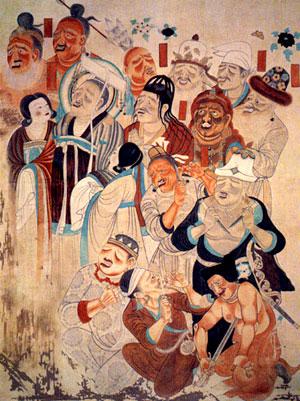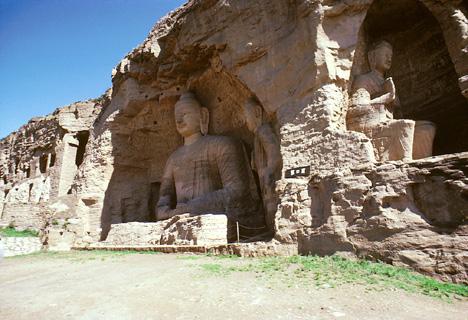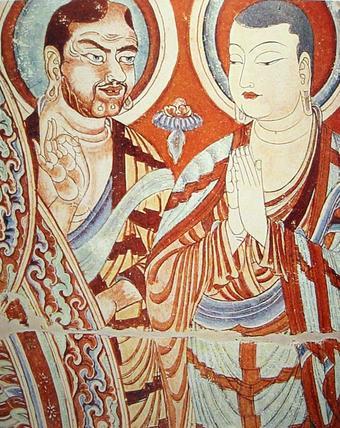Few realms have captured the romantic imagination of both East and West than Central Asia. Central Asia is home to an invaluable chapter of Buddhism’s heritage and pilgrimage. And as muted as it is today, it is not a chapter that has ended yet.
Central Asia has a human history stretching back to when the immigrant Indo-Aryans made their home in India and established the Vedic culture, and when the Indo-Iranians moved West to come into contact with the even older civilizations of the Near East and Egypt. It was in Central Asia that the proto-Indo-European family of languages has its roots. The far-flung reach and influence of modern Indo-European languages (from Sanskrit to Greek and Latin to the Germanic, Romance and Slavonic, to name only several) owes itself to the constant migrations by peoples across the Eurasian landmass.
Key to the influence of Central Asia were the spiritual thinkers whose ideas would shape the cultures and societies of the region. Among the earliest was Zarathustra, the founder of Zoroastrianism. Later, there was Mani of the Manichean tradition, and Jesus Christ, the rabbi who was later seen to be the Son of God in Christianity. The traceless figure of the Buddha was not from the Near East like Jesus or Central Asia like Zarathustra, but from the heartland of Magadha, ancient India. But his teachings were universal, intended for all sentient beings, and it was only natural that it should diffuse into vastly different social, ethnic and cultural arenas.
It is said that the drive to bring the religion outside of northern India began with Asoka the Great. But Central Asia was not simply a transition point. Buddhism entered a new phase of creativity in the oasis kingdoms like Khotan, Kucha, Turfan and Yarkand, and new scriptures were not only compiled in these regions but even composed and circulated. For almost a thousand years, Central Asian Buddhism was the missionary religion of Indo-Europeans like the Parthians (the most famous being An Shigao, a prince-turned-monk), Scythians, Yuezhi, Khotanese and Turks.
In the Common Era, contemporaneous to the great Han Dynasty of Imperial China and the reign of Augustus in the Roman Empire, was the Ku???a imperium. Its rulers oversaw, along with Caesar and the Son of Heaven, trade along the Silk Routes, which brought precious metals from Rome into India, ivory, textiles and gems from the Indic heartland, and highly prized silk and luxury articles from China. Interregional trade of the “seven precious items” (gold, silver, crystal, lapis lazuli, carnelian, corals, and pearls) became associated with travelling Buddhists very early on, who held in their hands the Buddha’s portable holiness in the form of sutras and transportable shrines. The Silk Routes that the famous merchants of Sogdiana traversed were not a monolithic entity, but they had always served us well in establishing Buddhist territories across the continent.
The Bamiyan Buddhas are the largest and starkest reminder of Buddhism’s onetime strong presence in Central Asia. Now the religion accounts for a very small minority in countries like Afghanistan, Kazakhstan, Kyrgyzstan, Tajikistan, Turkmenistan and Uzbekistan. We must do everything in our power to nurture these communities and help them make them heard amidst their difficult circumstances. The smaller Buddhist communities are, the more attentively we must listen to their voices.
Recommended Books and Articles
Beckwith, C. The Tibetan Empire in Central Asia: A History of the Struggle for Great Power among Tibetans, Turks, Arabs, and Chinese during the early Middle Ages. Princeton: Princeton University Press, 1993.
Beckwith, C. Empires of the Silk Road: A History of Central Asia from the Bronze Age to the Present. Princeton: Princeton University Press, 2009.
Benjamin, C. The Yuezhi: Origin, Migration and the Conquest of Northern Bactria. Turnhout: Brepols, 2007.
Dunnell, R. W. The Great State of White and High: Buddhism and State Formation in Eleventh-Century Xia. Honolulu: University of Hawai‘i Press, 1996.
Falk, H. “The Yuga of Sphujiddhvaja and the Era of the Ku?â?as”, in Silk Road Art and Archaeology 7, 2001, pp. 121 – 36.
Foltz, R. Religions of the Silk Road: Premodern Patterns of Globalization. 2nd ed. New York: Palgrave Macmillan, 2010.
Heitzman, J., “Early Buddhism, Trade and Empire”, in Kenneth, K.A.R. and Possehl, G.L. (eds.). Studies in the Archaeology and Palaeoanthropology of South Asia. New Delhi; Bombay; Calcutta: Oxford and IBH Publishing, 1984.
Kepping, K. S., “The Name of the Tangut Empire”, in T’oung Pao II, Vol. 80, Fasc. 4/5, 1994, pp. 357 – 76 (trans. George van Driem).
Kwanten, L., “The Structure of Tangut [Hsi Hsia] Characters”, in T’oung Pao II, Vol. 75, Livr. 1/3, 1989, pp. 1 – 42.
Neelis, J., “La Vieille Route Reconsidered: Alternative Paths for Early Transmission of Buddhism Beyond the Borderlands of South Asia”, in Bulletin of the Asia Institute, 16, 2002, pp. 143 – 164.
Salomon, R., “A Stone Inscription Mentioning Huvi?ka as a Follower of the Mah?y?na”, in Baarvig, J. et. al. (eds.). Buddhist Manuscripts in the Schøyen Collection, 2, 2002, pp. 255 – 67.
Salomon, R., “The Inscription of Senavarma, King of O?i”, in Indo-Iranian Journal, 29, 1986, pp. 261 – 93.
Srinivasan, D. M. (ed.). On the Cusp of an Era: Art in the Pre-Kusana World. Leiden; Boston: Brill, 2007.
Tremblay, X., “The spread of Buddhism in Serindia: Buddhism among Iranians, Tocharians and Turks before the 13th century”, in Heirman, A. and Bumbacher, S. P. (eds.). The Spread of Buddhism. Leiden: Brill, 2007, pp. 75 –129.
Zürcher, E., “Han Buddhism and the Western Region”, in W.L. Idema and E. Zürcher (eds.). Thought and law in Qin and Han China. Studies dedicated to Anthony Hulsewé on the occasion of his eightieth birthday. Leiden: E.J. Brill, 1990, pp. 158-182.















